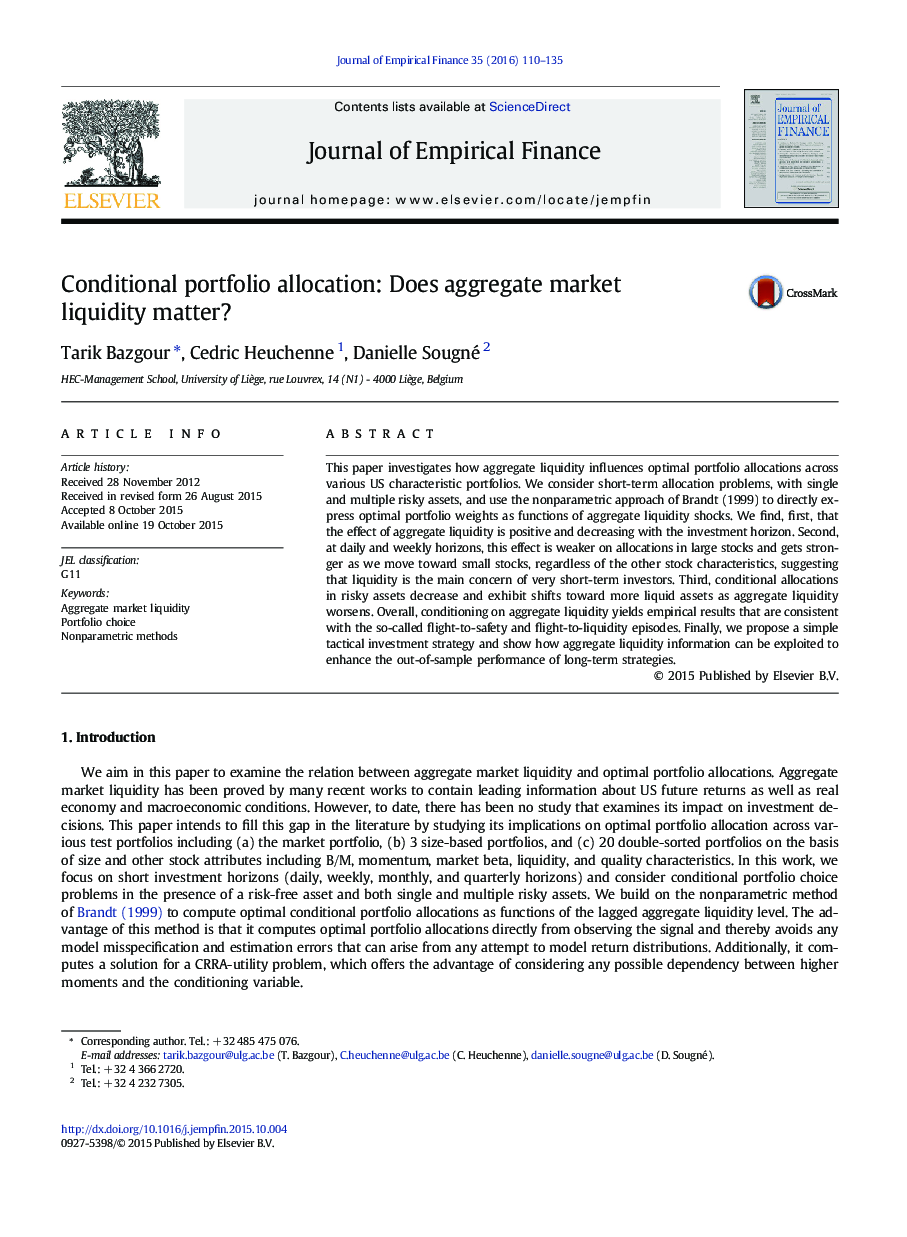| Article ID | Journal | Published Year | Pages | File Type |
|---|---|---|---|---|
| 958662 | Journal of Empirical Finance | 2016 | 26 Pages |
•We study how aggregate market liquidity influences optimal portfolio allocation.•Its effect decreases with the investment horizon and the asset's liquidity.•Optimal weights exhibit a shift toward larger stocks as market liquidity dries up.•Optimal weights in the risky assets decrease as market liquidity dries up.•Our liquidity-based strategy enhances performance and reduces potential losses.
This paper investigates how aggregate liquidity influences optimal portfolio allocations across various US characteristic portfolios. We consider short-term allocation problems, with single and multiple risky assets, and use the nonparametric approach of Brandt (1999) to directly express optimal portfolio weights as functions of aggregate liquidity shocks. We find, first, that the effect of aggregate liquidity is positive and decreasing with the investment horizon. Second, at daily and weekly horizons, this effect is weaker on allocations in large stocks and gets stronger as we move toward small stocks, regardless of the other stock characteristics, suggesting that liquidity is the main concern of very short-term investors. Third, conditional allocations in risky assets decrease and exhibit shifts toward more liquid assets as aggregate liquidity worsens. Overall, conditioning on aggregate liquidity yields empirical results that are consistent with the so-called flight-to-safety and flight-to-liquidity episodes. Finally, we propose a simple tactical investment strategy and show how aggregate liquidity information can be exploited to enhance the out-of-sample performance of long-term strategies.
